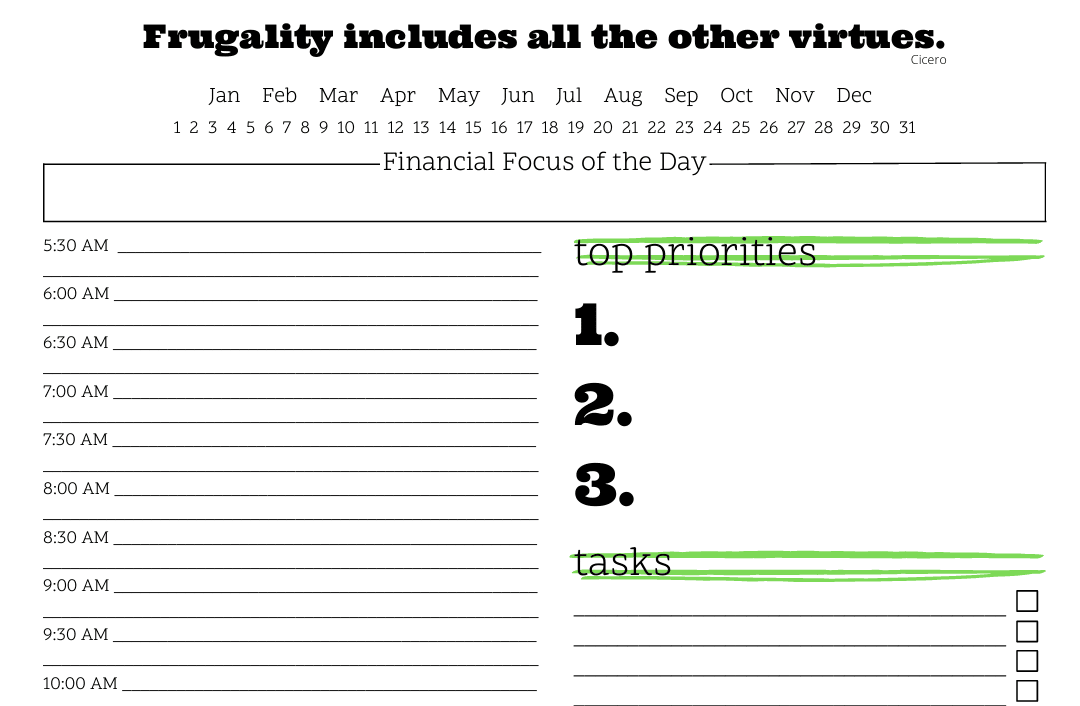This article may contain references to products or services from one or more of our advertisers or partners. We may receive compensation when you click on links to those products or services. Nonetheless, our opinions are our own.
The information presented in this article is accurate to the best of our knowledge at the time of publication. However, information is subject to change, and no guarantees are made about the continued accuracy or completeness of this content after its publication date.
The start of your investment journey is an exciting but challenging period. You have many investment options and strategies available to you. However, with your limited experience, you can easily make mistakes in your choices and methods of execution.
While beginners’ mistakes are common among investors, learning to avoid these mistakes can help you fast-track your wealth building. This article considers nine popular mistakes new investors make with practical solutions.
1. Poor Research
Many new investors start investing without proper research. Motivated by the success of others, social trends, and unverified tips from family and friends, they jump into asset acquisition without any due diligence. However, investing without proper research can be disastrous. You could end up buying the wrong assets or buying at the wrong time. Worse yet, you may even fall into investment traps and scams.
How to Avoid This
Good pre-investment research can help you avoid this common mistake. Before investing in any asset or security, try to understand its working principles, historical performance, and risks involved.
As a beginner, use online tools to research the basics of investing and familiarize yourself with key terms and processes. When considering assets, your research should ensure sector, company, and product coverage before investing in them. Good research makes you more informed and equips you for better decision-making.
2. Pursing High Returns
New investors often succumb to the temptation of pursuing high returns. This attracts them to hot and trending stocks and assets, where they invest without understanding or assessing risks.
Unfortunately, most high-return assets carry higher risks and require more professional handling. Investing in such assets with inexperience and a poor strategy has caused many new investors significant losses.
How to Avoid This
Veteran investors believe that good investing is 1% action and 99% patience. Patience is important to avoid chasing high returns. Instead of this, take time to build a solid investment strategy in line with your resources and goals.
Even with limited capital, try to diversify your portfolio with high and low-risk assets, investing only with good information. Financial literacy and a solid strategy built with diversification and the core and relying on compounding offer a better chance of success.
3. Poor Long-Term Planning
The investment market is not a casino where you bring in some money and take out more after having a good time. Unfortunately, many new investors see it this way. They just want to invest capital, make a profit as soon as possible, and withdraw it.
This undue focus on short-term gains results in frequent buying and selling of assets. With this poor approach, these investors accumulate losses from transaction fees and taxes.
The short-term approach also encourages impulsive reactions to market fluctuations, which can cause investors to miss out on growth opportunities. Short-term planning has caused many young investors to leave the market without profit – some without their capital.
How to Avoid This
Outline clear investment and financial goals before you begin your investment journey. Use these goals to guide your investment decisions and build effective strategies to help you navigate the market.
While it is important to remain flexible, develop the discipline to stick to your financial plans and avoid emotional decisions. Patience and consistency will help you always think in the long term and grow your wealth despite current market situations.
4. Overlooking Diversification
Putting all your eggs in one basket is one of the most common mistakes among new investors. While it may seem like common sense to avoid this, overconfidence still leads many down this path. Investors with unbalanced confidence in themselves and specific assets often pool their strength and resources to one asset, leading to disappointing losses when they fail.
How to Avoid This
Put diversification at the center of your investment strategy and build a portfolio with a good mix of assets. Your portfolio can contain stocks, real estate, bonds, and commodities. When diversifying your portfolio, try to mix long-term and short-term assets, as well as high-risk and low-risk assets. Diversification helps you achieve an equalizing effect and mitigates the impact of any poor-performing asset in your portfolio.
Voted "Best Overall Budgeting App" by Forbes and WSJ
Monarch Money helps you budget, track spending, set goals, and plan your financial future—all in one app.
Get 50% OFF your first year with code MONARCHVIP
5. Emotional Investing
Many new investors allow their emotions to control their investment decisions. This often leads them to buy in excitement and sell when afraid – without research and consultation. Investment decisions influenced by emotions are ever-changing to satisfy the investor. However, this inconsistency can cause losses from transaction fees and taxes and impede portfolio growth.
How to Avoid This
Make a plan and stick to it. Build discipline, patience, and consistency to help stabilize your decisions. You can also build relationships with fellow investors and seek their opinions to balance your thoughts and impulses during market fluctuations.
You can hire a financial advisor to help with your investment decision-making. A clear financial goal will also help you think in the long term and avoid focusing on current market events and fluctuations.
6. Neglecting Professional Guidance
With the investment market, tools, and resources accessible to all, new investors often believe they have everything they need to manage their investments without guidance.
Although independent learning and investing are good, navigating market complexities as a young investor can cause expensive mistakes. You could miss out on opportunities or use counterproductive strategies.
How to Avoid This
Seek professional guidance when starting your investment journey and leverage their wealth of experience. They’ll help you avoid mistakes and optimize your investment for maximum returns.
Professionals also provide educational value. They can teach you how to navigate the market, develop effective strategies, and use professional tools. Don’t hesitate to invest resources in professional guidance; the returns are always worth the investment. When seeking guidance, be sure to find a certified professional with proven records to ensure you get the best services.
7. Ignoring Risk Management
Risk management describes the process of balancing opportunities for profits with the potential for losses in an investment. It helps you minimize potential losses without sacrificing opportunities for gains in an investment.
Unfortunately, many new investors fail to assess their risk when investing in assets and security. They fail to measure their risk tolerance or even factor in the possibility of failure in their investment strategy. This causes undue stress, especially when investing in assets too unpredictable or volatile for their tolerance level.
How to Avoid This
Measure your risk tolerance before committing to any investment decision. Also, consider the possibility of failure and design risk management strategies to mitigate these. You are better equipped to handle disappointments when you expect them than when you’re ignorant of them. You can even consult an investment professional to help you develop a risk management strategy based on your investment choices.
8. Ignoring Investment Costs and Fees
There are many direct and indirect costs associated with investments, especially in the stock market. These fees range from simple transaction costs to management fees and hidden charges. While these costs and fees may appear small and insignificant, they accumulate to significant amounts during an investment period.
Sadly, young investors don’t factor in these costs and fees when building capital or when investing. Some are ignorant of these costs, while others fail to see the level of the impact of these costs on their growth. Hidden costs can hinder your portfolio’s performance, especially when compounded over a long investment period.
How to Avoid This
Do good research about your investment and investment platform to understand their fee structure. Study the fee structure of your investment and platform to build a strategy that allows you to optimize growth and ensure sustainability.
Always choose cost-effective investments to boost long-term returns. Explore effective strategies to reduce unnecessary fees in your investment to cut costs. It helps to work with an experienced broker, like a Hiive broker, to help you navigate investments and platforms, at least at your initial investment stage.
9. Neglecting Taxes Allowances
Investing through a tax-efficient wrapper like life insurance, charitable bonds, or retirement accounts can significantly boost your financial investment. Unfortunately, many new investors lack this knowledge and use inefficient methods for investments,
Another common mistake with taxes among young investors is focusing too much on taxes. This drives them toward inefficient tax-loss harvesting that deprives them of growth and an increased net profit.
How to Avoid This
Good financial research will help you find the most feasible tax wrapper to apply for your specific investment asset and strategy. You can consult financial, tax, and investment professionals for counsel about each available wrapper and their efficiency in investment.
It also helps to seek advice from veteran investors about how to effectively implement tax-loss harvesting to optimize your investments for maximum returns. With commitment, proper counsel, and guidance, you’ll develop effective strategies to leverage tax allowances when investing.
Endnote
Every new investor seeks success in the investment market. However, there are many mistakes common to young investors that could impede their success. Some of these include emotional investing, poor risk management, neglecting professional guidance, pursuing high returns, poor research, lack of diversification, and neglecting investment costs and fees. Nevertheless, you can avoid these mistakes with proper research, working with investment professionals, and developing an effective strategy governed by discipline.

Reviewed and edited by Albert Fang.
See a typo or want to suggest an edit/revision to the content? Use the contact us form to provide feedback.
At FangWallet, we value editorial integrity and open collaboration in curating quality content for readers to enjoy. Much appreciated for the assist.
Did you like our article and find it insightful? We encourage sharing the article link with family and friends to benefit as well - better yet, sharing on social media. Thank you for the support! 🍉
Article Title: Top 9 Mistakes New Investors Make (and How to Avoid Them)
https://fangwallet.com/2024/12/24/top-9-mistakes-new-investors-make-and-how-to-avoid-them/The FangWallet Promise
FangWallet is an editorially independent resource - founded on breaking down challenging financial concepts for anyone to understand since 2014. While we adhere to editorial integrity, note that this post may contain references to products from our partners.
The FangWallet promise is always to have your best interest in mind and be transparent and honest about the financial picture.
Become an Insider

Subscribe to get a free daily budget planner printable to help get your money on track!
Make passive money the right way. No spam.
Editorial Disclaimer: The editorial content on this page is not provided by any of the companies mentioned. The opinions expressed here are the author's alone.
The content of this website is for informational purposes only and does not represent investment advice, or an offer or solicitation to buy or sell any security, investment, or product. Investors are encouraged to do their own due diligence, and, if necessary, consult professional advising before making any investment decisions. Investing involves a high degree of risk, and financial losses may occur including the potential loss of principal.
Source Citation References:
+ Inspo












































